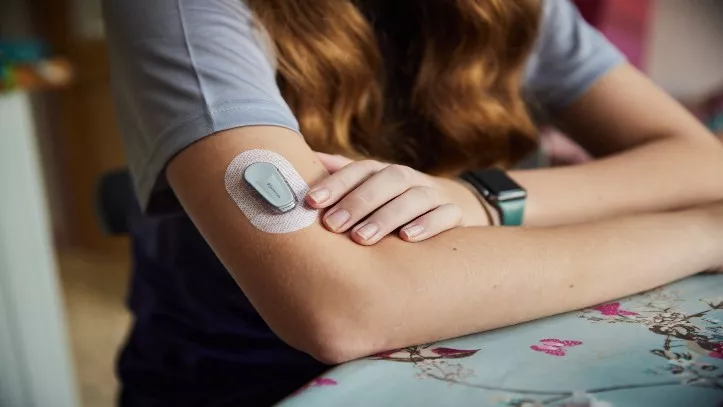
For the first time, the National Institute of Clinical Excellence (NICE) has recommended continuous glucose monitoring (CGM) technology for children and young people living with type 2 diabetes in England, Northern Ireland and Wales.
NICE's updated guidelines recommend a choice of continuous glucose monitor or Flash device, depending on the needs and preferences of the young person living with type 2 diabetes and their families, if any of the following apply:
- they have a need, condition or disability (including a mental health requirement, learning disability or cognitive impairment) that means they cannot monitor their blood glucose by finger prick testing
- they would otherwise be advised to test their own blood sugar levels at least eight times a day
- they have recurrent or severe low blood sugar levels
The guidelines also say CGM and Flash should be considered for children and young people who are using insulin.
Milestone guidance
We welcome this announcement, which represents the first time the technology has been recommended for children and young people living with type 2 diabetes in national guidelines for England, Wales and Northern Ireland.
There is a concerning increase in the prevalence of type 2 diabetes in children and young people which has risen sharply in recent years. The most recent 2021/22 National Paediatric Diabetes Audit revealed that there are 1,114 children and young people with type 2 diabetes in England and Wales compared to 790 in 2018/19. The condition is also more aggressive in children and young people with a high risk of complications.
As well as recommending Flash or CGM in some cases, this guideline update also expands the range of medications that can be prescribed to reduce blood glucose levels, supporting children and young people to reduce their HbA1c.
CGM is already recommended for all people living with type 1 diabetes and some adults living with type 2 diabetes, and we are pleased that the committee agreed that this life-changing tech should be available for the growing and vulnerable population of children and young people with type 2 diabetes.
Implementing the guidelines
The NICE guidance is also clear that health systems should ensure tech is available equitably: by proactively identifying who is eligible and making plans to engage groups who have lower uptake or may face additional barriers in using CGM.
This is particularly important because rates of type 2 diabetes are disproportionately higher in children and young people who are from an ethnic minority background or the most deprived areas; people we know have experienced a slower uptake of tech for type 1 diabetes.
It will take time for guidelines to be implemented but we urge health systems to develop plans to offer CGM to children, young people and their families to help them manage this challenging condition in line with NICE’s guidance as soon as possible, and will continue working with them to do so.
There is ongoing work to better understand how type 2 diabetes in children and young people develops and should be treated but today marks significant progress towards expanding the options available and driving the improvements in their care.
